
When it’s time to plan a vacation, a destination like Belarus probably doesn’t immediately come to mind. However, the rivers and lakes of this hospitable country are perfect for a full-fledged and budget beach holiday. We tell you in which region of Belarus you can swim in crystal clear water and enjoy sunbathing on the sandy shore.
How to get there:
You can get to Minsk both by land and by air. The journey from Moscow by train takes about 7 hours, ticket prices start from 2,300 rubles*. The flight will cost at least 3,500 rubles*, but you will spend a little more than an hour in the sky.
Minsk region
In the north of the country, in the dense forests of the Naroch National Park, an ancient glacier left behind dozens of swamps and lakes. They come across in small groups. One of them, located in the Minsk region, is united into the natural complex “Blue Lakes”. The water in these reservoirs is so clean that visibility is 5–7 meters. A wooden eco-trail is laid between them through deep ravines and picturesque hills. You can swim in some lakes: on the banks there are convenient gentle entrances and infrastructure for vacationers – cabins, bridges, gazebos.
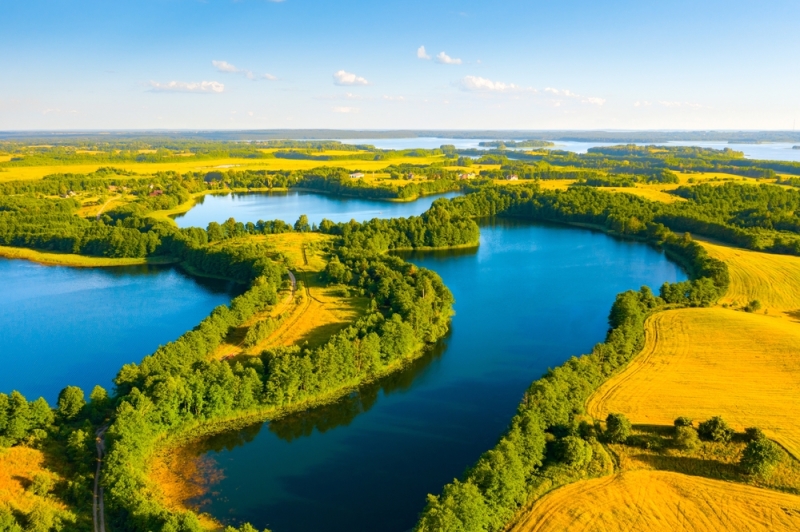
A couple of tens of kilometers to the south, within the boundaries of the national park there is Lake Naroch, which has resort status. Tourist life on the shores of this reservoir has been in full swing for more than 50 years. Travelers can improve their health at the Narochanka sanatorium, pitch a tent in the camping area, spend the day on the sandy beach or go fishing. And if you want to stay for the whole weekend, you can find nice guest houses in the surrounding area, for example, two nights in the atmospheric Malinovka Homestead will cost 9,000 rubles*.
If you suddenly get bored of relaxing by the water, you can see ancient Catholic churches nearby. For example, in Zasvir, which is half an hour’s drive from Naroch, Trinity Church built from the beginning of the 18th century has been preserved. And in the city of Budslav there is a beautiful baroque Church of the Assumption of the Virgin Mary, where the original organ from 1771 still stands. The journey from Naroch to Budslav takes about an hour by car.
Brest region
There are also many unusual lakes here. For example, Katashi– a former amber quarry, which locals call Belarusian Tunisia or the Maldives in Belarusian. All thanks to the white and unusually soft sand, uncharacteristic for this strip. A holiday here is suitable for those who miss turquoise sea water. And on Lake Papernya, which is northeast of Brest, you can communicate with swans. People have long fed the birds on the shore, and now you can even stroke them, of course, provided that you have some kind of delicacy. There is another lake beloved by locals in the region – Vygonoshchanskoye. It is located within the boundaries of the landscape reserve of the same name – an ideal place to take a break from civilization. It is home to more than 200 species of birds, 50 species of mammals, as well as several species of reptiles and amphibians. The lake is also rich in fish.
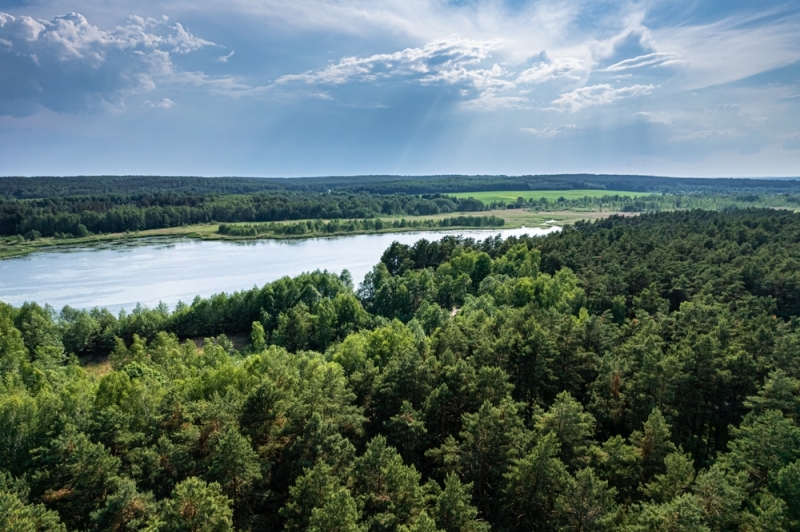
A trip to the reservoirs of the Brest region can be combined with a cultural program. And it is not always limited to the famous Brest Fortress and Belovezhskaya Pushcha. For example, in the northeast of the region you can visit the unusual Yasenets source. The water here bursts out from the depths of the earth under pressure, and outwardly it seems as if it is boiling. For this reason, the people called the spring “Boiling Water”. However, the water temperature is only 6–9 degrees, regardless of the season. Thanks to the chemical composition of the rock and the unusual shape of its outcrop, Yasenets formed a hydrological landscape that was amazing for these places.
In the town of Lyskovo, the Church of the Holy Trinity, built in the mid-18th century in the late Baroque style, has been preserved in a semi-ruined state. And very close to Brest, in Vystychi, you can see a former church, and now the Orthodox Church of the Exaltation of the Holy Cross from the mid-17th century. In the village of Skokie there is one of the most tourist places in the area – the estate of the Niemtsevichs, a noble family of the Polish-Lithuanian Commonwealth and Poland. It was built in 1777, survived two world wars, many devastations, and now there is a functioning historical museum there.
You can travel around lakes, natural and architectural monuments in a few days if you stay in Brest. For example, in Hotel Byg 6 nights for two will cost 14,300 rubles*, and in Hermitage Hotel a double room for the same period costs about 55,000 rubles*.
Grodno region
This is a real river region. The leisurely Neman River flows here, absorbing its numerous tributaries. Local residents like to relax on them and their branches. The banks of the Neman are pebbly, in some places there are large boulders, thanks to which the water bubbles and seems to boil. Along the river there are recreation centers, hunting lodges, glampings, sanatoriums and private hotels for every taste.
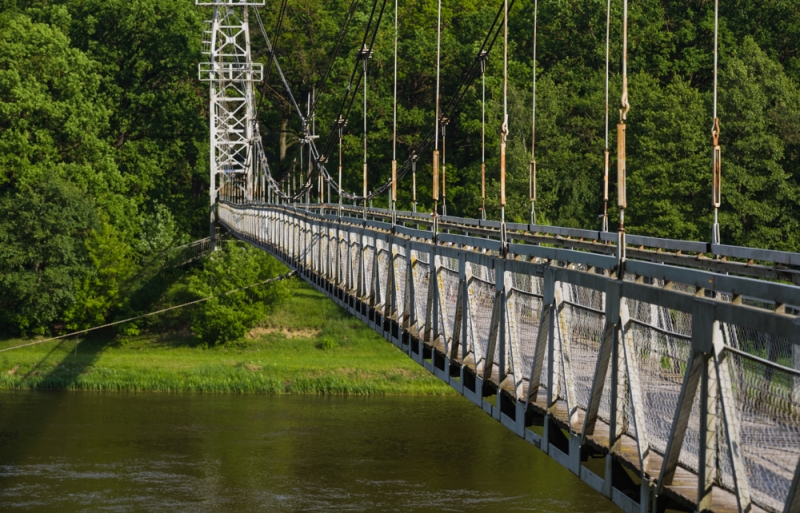
The longest pedestrian suspension bridge in Belarus with a length of more than 190 meters was installed in the city of Mosty nad Neman. It connects two parts of the settlement, separated by a river. Until recently, it was easy to swing it with a couple of movements, but after the latest restoration it became more stable, but remained the calling card of the city and one of the most romantic locations in the area.
100 kilometers from Grodno there is another interesting water attraction – Volkovysk chalk quarries. Previously, rock was mined there for a concrete plant, but now this place is loved by both Belarusians and guests of the region. Photos of white shores covered with lush greenery and turquoise waters, like the beaches of the Maldives, instantly spread across the Internet, and the place became popular among tourists. The quarries are elongated and from a certain angle resemble fjords, only painted with warm colors.
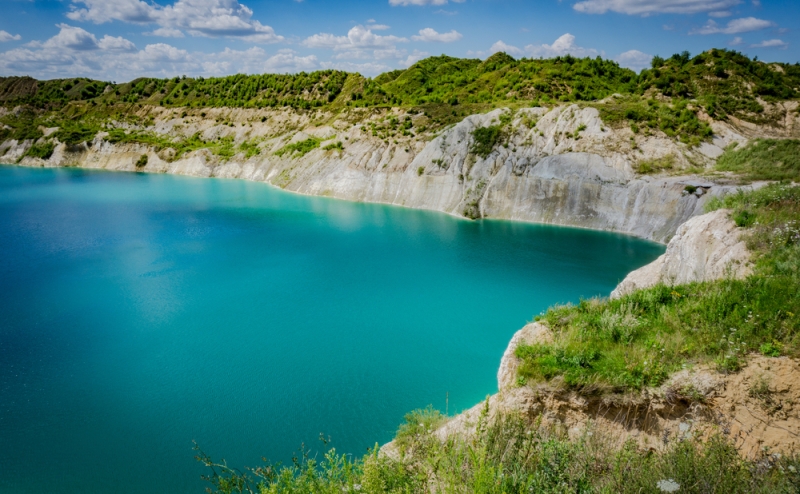
You can stay in Grodno for several days at the Grodnoturist hotel, the price of a room for two is about 2,400 rubles* per night, or at the New World boutique hotel for 5,600 rubles*.
Similar quarries, only reminiscent not of the hot Maldives, but of northern Ruskeala, are also in the Mogilev region, not far from the village of Lozovitsa. It is not safe to swim in them due to the softness and fragility of the shore rock, but they are ideal as a backdrop for a summer holiday.
Vitebsk region
Approximately 120 kilometers from Minsk towards St. Petersburg is locatedBerezinsky Biosphere Reserve. A huge territory of 85,000 hectares occupies part of the Minsk and Vitebsk regions. The Berezinskaya water system is located there – an ancient trade route from the Varangians to the Greeks, recreated in 1797–1805, connecting the basins of the Baltic and Black Seas. Swimming here is unlikely to bring much pleasure – too many fish, snakes and frogs live in the water, but kayaking is easy!
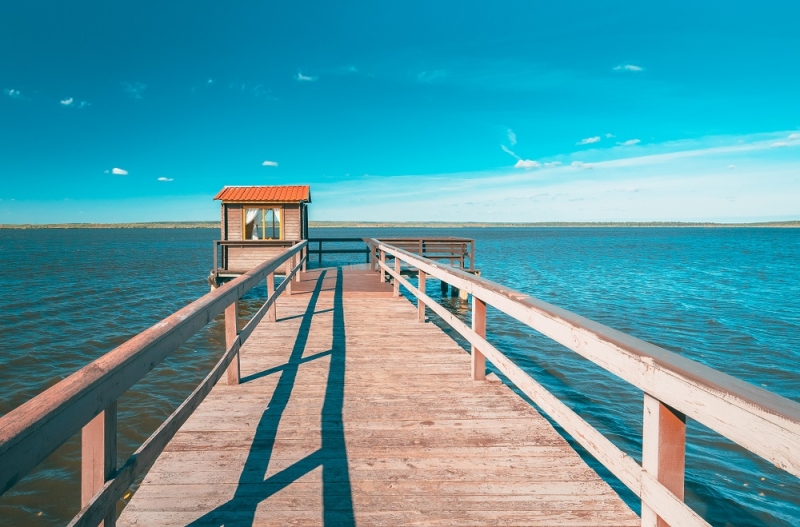
And if you come to the Vitebsk region, don’t forget to look at the local Mercury on the border of the Shumilinsky and Polotsk regions. The space view of the Obol marshes can be assessed from a satellite. In a relatively small area there are more than 400 “eyes” – small lakes. Several hiking trails run through the swamps. It is better to go through them in company, because the Kozyansky reserve is home to brown bears and lynxes. And if you meet a spotted owl on a lonely pine tree, be sure to ask her for a letter from some school of wizards, because even the swamps in Belarus look fantastic!
*Prices valid at time of publication.

